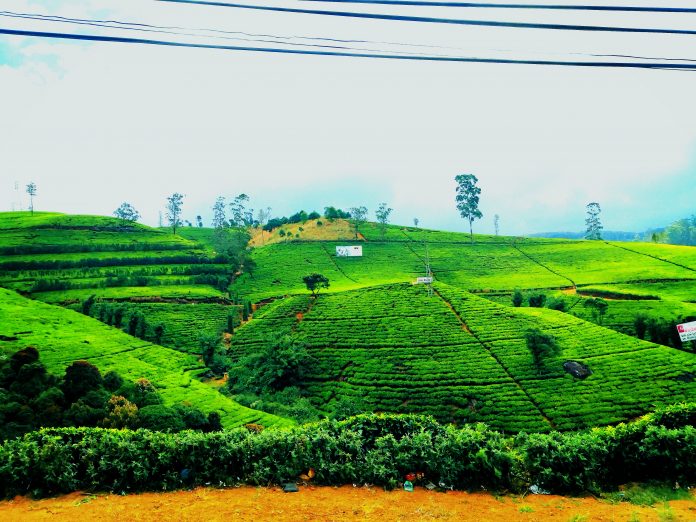Coca-Cola was born in Atlanta, Georgia in 1886, exactly 19 years after James Taylor planted tea in Loolecondura estate, Deltota in Kandy district.
Today it is the world’s most famous and largest beverage company, valued at US$ 150 billion (GDP of Sri Lanka is around US$ 90 billion).
On the other hand, the tea yields of Loolecondure estate, after 152 years in production have drastically dropped below 600 kilos per hectare whereas the national average yield is over 1,500 kilos for the year.
The current tea prices of this estate are around Rs. 390 per kilo, much below the National average of Rs. 588 per kilo. As for Coke, the communities around the world that live and work around Coca-Cola bottling plants are experiencing severe water shortages as well as environmental damage.
In 2003, the Independent Centre for Science & Environment (CSE) tested Coca-Cola beverage and found pesticide levels, 30 times higher than the EU standards. To make one litre of Coke it requires three litres of water, whereas Sri Lanka has a rich bio- diversity -rich in its water resource, compared with Kenya and India.
A system view of sustainable communities
Modern Science has come to realize that all scientific theories are approximations to the true nature of reality. Science doesn’t have answers to natural phenomena. Mechanistic view looks at a closed view of a specific area which is a tiny part of a large system. They have dominated our culture for the past three hundred years and is now about to change.
Before 1500 AD, the dominant world view was that people lived in small communities and experienced nature by the interdependence. The ‘Systems view’ looks at the world in terms of relationships and integration, inter-dependence of all phenomena- that is, physical, biological, social, and cultural.
According to Prof. Fritjof Capra, an Austrian-born American physicist, the architect of ‘systems view of life’ to find lasting solutions, we require a radical shift in our perceptions, our thinking, and our values. An ‘Eco system’ is a living system of communities of plants and animals, microbes sharing an environment with non- living plants such as air, water, climate, soil.
A sustainable community is one that is economically, environmentally, and socially healthy and resilient. It meets challenges through integrated solutions rather than through fragmented approaches that meet some goals at the expense of the others.
And it takes a long-term perspective – one that’s focused on both the present and future. In this regard, the word ‘sustainability’ is often distorted without being used in ecological context to get its proper meaning. My view is that the long-term goal of tea estates is to build ‘sustainable communities’.
Capra’s view is that our traditional politicians and business leaders have been unable to provide long-term solutions to these problems and he welcomed the creation of social movements founded on the premises to change the current traditional sociological paradigm. From the systemic point of view, the only viable solutions are those that are ‘sustainable’.
The ‘Systems View’ looks at the world in terms of relationships and integration, inter-dependence of all phenomena – physical, biological, social, and cultural.Therefore, the challenge of our time is to create sustainable communities, that is, social and cultural environments in which we can satisfy our needs and aspirations without diminishing the chances of future generations.
As for marketing of tea in the global markets, the discerning high-end customers have high expectations of the standards and sustainability practices applied by the estates. For example,’ tea’ must be produced and supplied according to the principles of ‘sustainable food’ thus providing values to discerning customers, employees and all other stake holders. ‘Pesticide free’ tea growing and continuation of CSR programmesmust be viewed in that perspective.
Leaving the industry to future generations in better condition than the one inherited
The sustainable estate communities need to be designed in such a way, that its social structures do not interfere with natures inherent ability to sustain life but support and corporate with natures inherent ability to sustain life.
One of the most striking features of the current operations of the Regional plantation companies and tea exporter’ companies is the increased awareness and adherence of the social and environmental considerations at estate and packing plant level. They strive to be self-sufficient in green energy to operate all the tea factories and warehouses in Colombo through solar power and harness the hydropower potential within the lands entrusted to the RPCs.
The companies will make every endeavour to conserve the usage of resources by optimizing resource utilization and minimizing waste through practicing cleaner production principles. The RPCs have to ensure that our ‘natural resources’ and eco-systems will be managed in a sustainable manner, to take advantage from the marketing standpoint.
RPCs, tea exporters and marketing companies, having realised the global trends encourage their employees to be innovative and strive to be proactive on sustainable credentials. They provide career growth and continuous training & development on international marketing, new technology etc.
The estate management will have to make every endeavour to take care of the workers and their families, with the assistance from PHDT, by providing housing, medical & child care and other facilities, in addition to giving them a ‘living wage’. Ceylon tea could continue to fetch higher prices compared to teas from other producing countries based on our sustainable credentials, although the cost structures and productivity levels of our estates are totally disproportionate to make the industry commercially viable in short to medium-term scenario.
It is therefore, vital that the tea sector addresses the low land & labour productivity issues on a long-term basis through activity- based costing methods and business process re-engineering techniques. The premium prices for Ceylon teas are not necessarily sustainable in the global markets, which will reflect the demand and supply of teas.It is in that context only the current wage demand of Rs. 1,000 should be viewed.
It is noticed that the authorities have already taken action to improve the green leaf standard at factory level through enforcing strict regulatory mechanism and small farmers, tea factories and the RPCs must have a total quality management system to self- regulate the standard of leaf.
Since the tea growing and manufacturing process enables us to produce and supply Ceylon teas globally as a unique and natural beverage, the regulations are in force that no adulterations are permitted and violations, if any will make those factories suspended to operate. It is pleased to note that majority of factories including re-processing centres are in passion of various quality certificates such as HACCP, ISO BRC, RA, Fairtrade and of course ‘ethical tea partnership’ to maintain high standard of end product delivery to discerning consumers.
It is also necessary to re-structure the institutions such as SLTB, TRI, TSHDA, PHDT, NIPM and towards this end, the JEDB, SLSPC and Elkaduwa Plantations Ltd could be easily merged. There is a potential for real estate development, if we carve off urban property within the plantation sector and formulate an action plan under a well- structured ‘REIT’ system, so that a bond issue to raise much needed equity capital could be arranged. In this context, one entity called ‘Ceylon Tea Development Authority’ could be set up (without having too many institutions) with necessary amendments to Tea control Act of 1957, Tea Board law of 1975, licencing of Tea Brokers Act of 1979, Indenture of leases between JEDB/SLSPC and RPCs in 1995 and, in this connection, the Intellectual Property Rights Act of 2003 needs to be amended to facilitate Ceylon Tea registration process.
We need to fast track ‘Ceylon Tea’ brand registration globally through Geographic Indication (GI system) under TRIPS scheme of Intellectual Property Rights. Ceylon tea could then be placed at an advantageous position in the global market viz; other competitors-if the marketing companies are allowed to take advantage of the Ceylon Tea brand with such affiliation to factors such as ‘Zero tolerance’ policy on child labour, pesticide free growing, minimising carbon emissions, rich water resource and adherence to other environmental considerations on a sustainable basis.
The necessary pre-requisite is a further enhancement of the quality of Ceylon tea on a consistent basis by the respective players at each block chain by improving efficient management system. It is expected that substantial amount of FDIs could be made available thus channelling through the new business model. We need to address those issues and resolve same before any serious ‘Ceylon tea promotion campaign’ is successfully launched globally and locally.
Ceylon Tea – In search of a ‘unique selling proposition’
A study on the global tea market published by Transparency Market Research (TMR) determining its value, have projected the market to reach a value of US$ 47 billion at retail end, whereas the Sri Lankan tea export revenue has been stagnating around US$ 1. 4 billion per year over the last three years. According to the report, rising awareness among the consumers regarding various benefits of consuming tea is the major growth driver of the global tea market. As we know, the global trend particularly with the millennials and the next generation are moving away from pure black tea. It is evident that tea is following the same coffee culture and big brands, coffee chains and the ‘HORECA’ segments are aligning with this to cater to the new trends. The reality is that the historical success factors of Ceylon tea alone cannot meet what the market demands.
Tea is no longer viewed as a routine beverage but instead it’s an experience.The positive trend that needs to be properly understood is the fact that tea consumption is not declining but it’s changing. The increasing concern over beauty and skincare is encouraging consumers to switch to green tea, which is expected to open an opportunity-rich market for players in the global tea market, states one internationally reputed market report. In view of above, we need to re-visit the belief that the ‘Ceylon character’ will always fetch us a premium and time is opportune to identify USPs going beyond ‘origin’, such as our sustainable credentials, our rich heritage, bio-diversity etc.
My own view is the ‘USP’ that enables Ceylon tea to stand out from our competitors would be our sustainability credentials, in particular our rich water resource.Apart from this, the economic advantages and ample opportunities for employment creation by the tea industry will also support the global marketing effort to a great extent.
The stakeholders, namely, the Government, the private sector involved in the tea industry i.e.; Small holders, private factory owners, RPCs, Brokers, tea exporters, trade unions etc. must reach a consensus on this new business model based on ‘total quality’ as perceived by consumers,thus focusing ‘the entire global value chain.’
“Every cup of tea you drink should help better the lives of the people who produce it, improve the environment where it is grown, and contribute to a thriving global industry.”- A Hero Crop for 2030.






